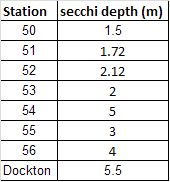Five nutrients were tested within QMH waters. Nutrient samples were taken at three different points in the water column: surface, thermocline and depth. At Dockton thermocline nutrient samples were not obtained. Dissolved inorganic nitrogen (DIN) is most commonly found in marine waters in the forms of Ammonium (NH4), Nitrate (NO3), and Nitrite (NO2), of which all are primary sources of nitrogen for phytoplankton (Rensel 1991). Phosphate (PO4) is a primary source of phosphorous (P) for phytoplankton and is essential in metabolic processes. Phosphorous may be limited in areas highly influenced by rivers due to the high concentrations of nitrogen (N) carried in their waters (Rensel 1991).
Silicic Acid (Si(OH)4) is incorporated into the cell walls of diatoms and is essential to their production (Rugdale et al. 2001). In periods of high phytoplankton production DIN, PO4 and Si(OH)4 are absorbed out of the system, in turn reducing concentrations.
Phytoplankton generally absorb N and P at a ratio of ~15:1, which is also the average ratio maintained in seawater. The balance of N and P which phytoplankton need vs. what is available in seawater is thought to be ecologically driven (Broecker et al. 1982).
Throughout QMH we saw decreasing levels of nutrients towards the inner harbor. Fluorescence was low throughout the harbor as well as low N:P towards the inner harbor. These data both suggest a recent bloom must have died out of which nutrient levels have not since rebounded. The outer stations had the highest concentrations of PO4, therefore riverine influence was not a factor for QMH at this time.

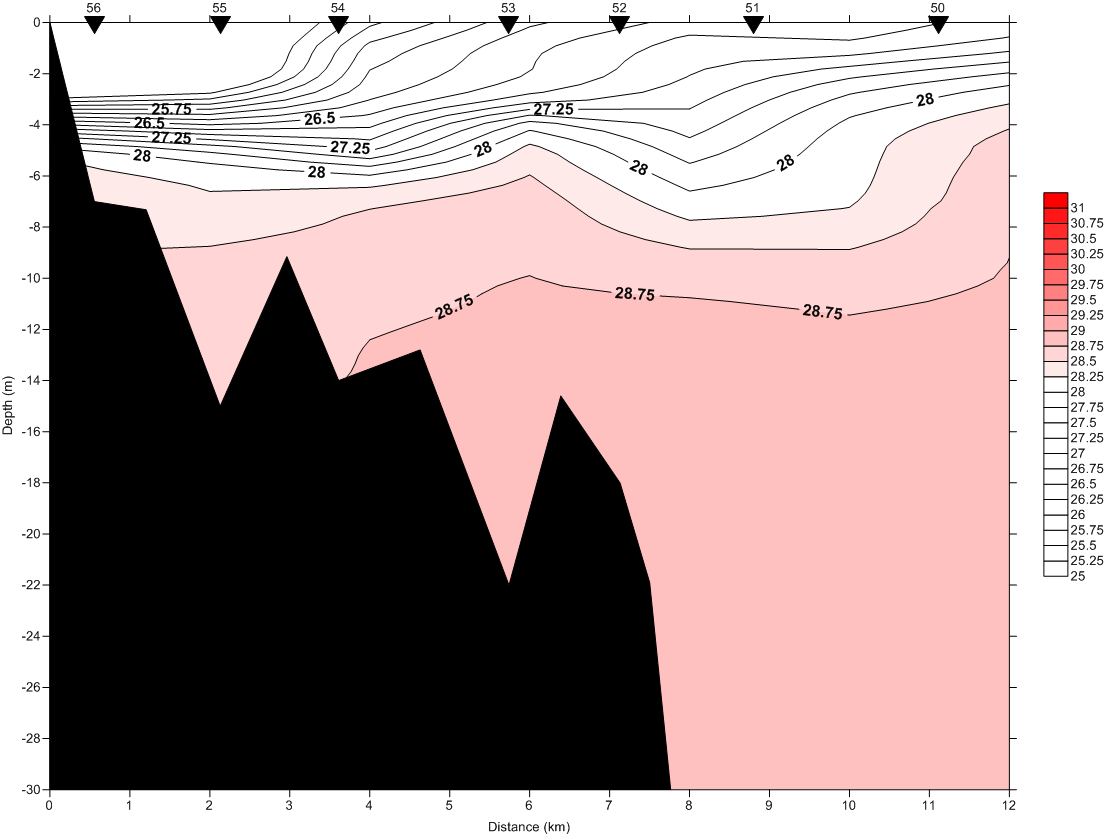

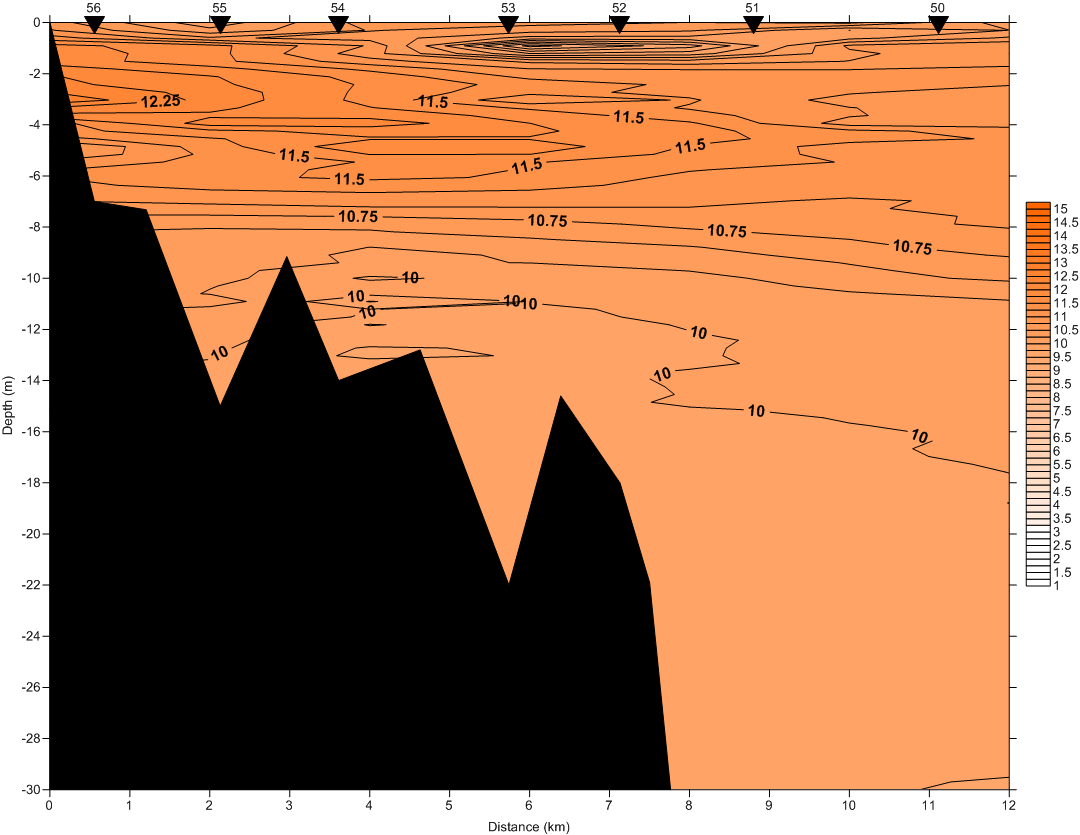
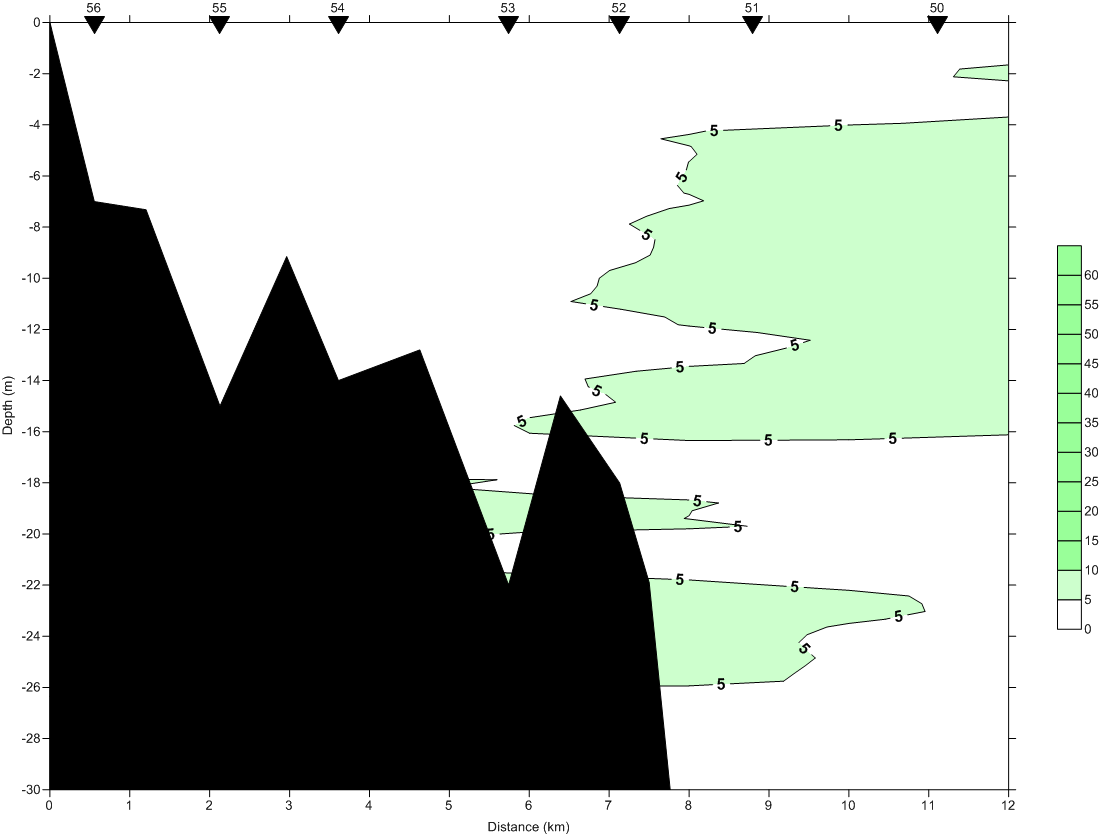
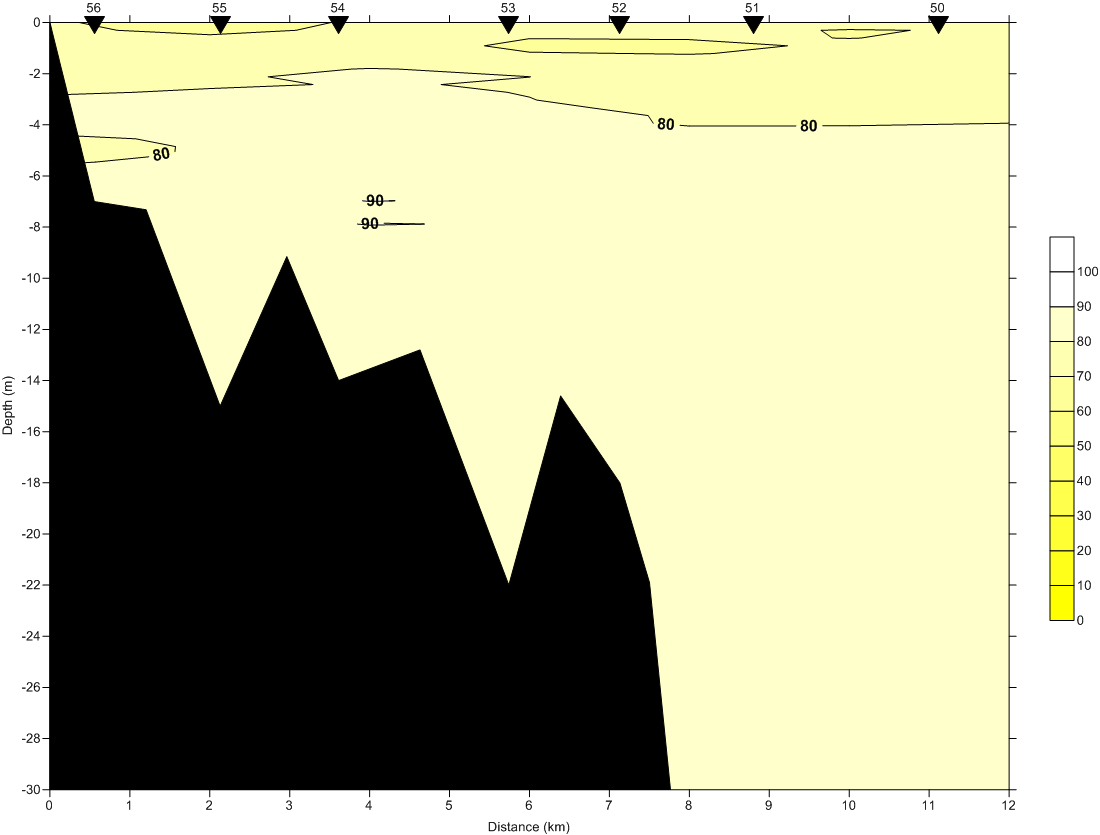


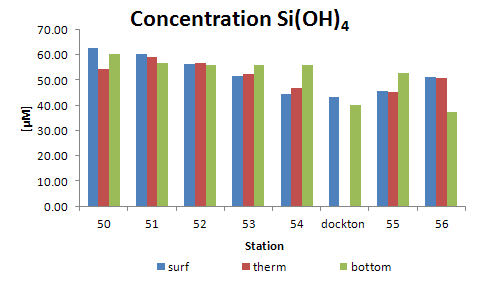
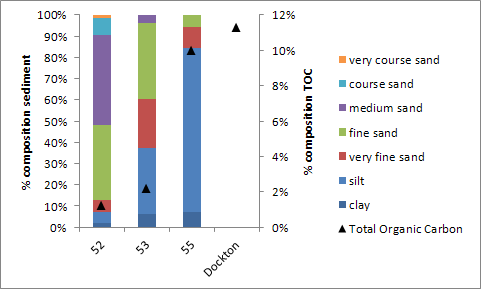 >
>